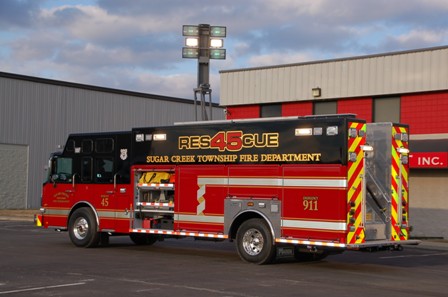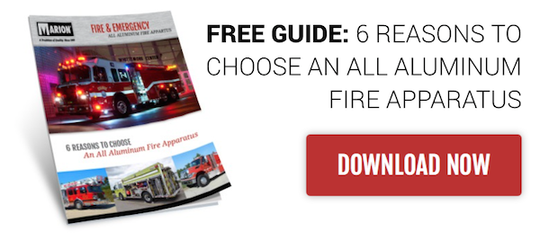A rescue apparatus can be one of the most challenging projects for an apparatus committee. Because each rescue apparatus is highly customized to fit each department’s unique needs, the committee is forced to make a number of difficult decisions regarding the apparatus’ size, additional features, storage compartments, and more.
To help your committee plan and design the perfect rescue apparatus for your department, the build team here at Marion has put together these useful tips for planning your next rescue purchase:
1. For starters, begin by listing out what the vehicle will respond for.
By knowing the types of jobs your apparatus will respond to, your committee will be much more informed when it comes time to make any layout and design decisions. You can always go back to ‘The List’ if the committee waivers and begins to plan more with the design than anticipated or intended.
2. After that, figure out the usage frequency of your apparatus’ tools.
Once you’ve determined the types of jobs your apparatus will be required to tackle, now you have to consider the equipment you use to finish those jobs. Think of the usage frequency of the components used on your missions and make sure the design incorporates these components to ensure easier access to the most frequently used tools on your rescue. For example, keeping your hydraulic rescue tool in an ergonomic holder on a slide-out tray might be more valuable than keeping the stokes basket there.
3. Consider getting a scale and weigh the department’s equipment.
NFPA guidelines give equipment values for payload that may not be adequate for your needs, and a weight distribution isn’t calculated with your Fire Department equipment in position. If you get a better understanding of the weight of the equipment, however, this will help you determine the proper distribution of the apparatus, as well as its payload.
4. Look at specifying your vehicle with similar sized compartments.
Having the ability to move shelves, trays, and other components from one compartment to the other will only help the department save money. However, manufacturing techniques and measurements differ from one vendor to the next, so make sure the storage space dimensions are equal. This way, you can be sure that the shelf will fit in a different compartment of the same size in the future.
5. Group compartments by mission type or by your existing fleet’s concepts.
Every second counts when you’re on a rescue mission, so it’s important that all of your important gear is exactly where you need it to be. Group your compartments together by mission type (i.e. having the cribbing, jacks, and stabilization all in one compartment), or by whatever the standard protocol is that your fleet uses. By having everything you need for one job in the same place and following a similar layout with all of your apparatus, your firefighters will be able to work much more efficiently – without having to look around for their tools.
6. Design special compartments for items like gasoline and other harmful products.
Because certain items are more dangerous than others, it’s important to design some compartments with extra caution. Try to keep all of these tools, cans, and fluids in a singular compartment, and make sure the truck design is compatible. For example, low-PSI hydraulic fluid can be very harsh to painted surfaces, so you should request extra provisions for this compartment specifically. Likewise, gasoline and other chemicals can form a concentration of fumes in their compartment, so it’s important to keep them isolated from other tools.
Purchasing a new rescue apparatus can seem pretty overwhelming for many apparatus committees. By answering these questions and following these tips, however, you can make the decision process a lot easier. To learn more about designing a custom rescue apparatus from Marion, check out our online dealer map or contact our expert team.




